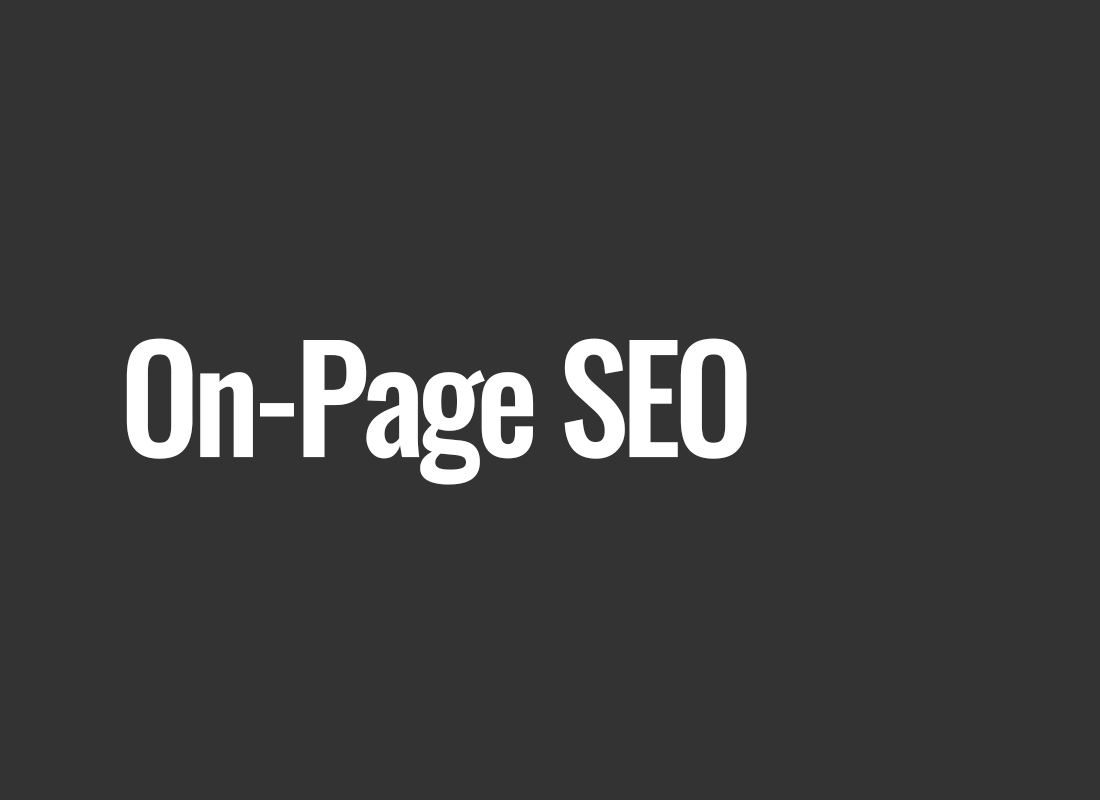On-Page SEO
On-Page SEO, or optimization of a website for search engines, is the foundation of an effective digital marketing strategy. It is a process that includes a series of actions aimed at adjusting both the content and the structure of a website to make it as friendly as possible for the algorithms of search engines like Google. In practice, this means not only weaving the right keywords into the content but also optimizing metadata, improving the website's loading speed, and ensuring its proper responsiveness.
In the digital age, where the internet has become the main medium of communication and commerce, positioning a website in search results is crucial for business success. On-Page SEO plays a fundamental role here, as highly rated sites attract more visitors, which translates into increased brand recognition, sales growth, and building trust among customers.
However, On-Page SEO is not just a technical issue. It is also the art of creating valuable, engaging content that meets the needs and questions of users. In this context, website optimization becomes a continuous process, requiring regular updates and adjustments to changing trends, user preferences, and search engine algorithms.
Key Elements of On-Page SEO
On-Page SEO is a complex process that requires understanding and applying many different techniques and practices. In this section, we will take a closer look at the most important elements that make up effective search engine optimization.
1. Content Optimization. The heart of On-Page SEO is content. High-quality, unique, and valuable content that answers users' questions and needs is key. This includes not only the appropriate use of keywords but also creating content that naturally engages readers. The content should be well-organized, easy to read, and contain appropriate headers to facilitate user navigation.
2. URL Structure. Clean, logical, and short URLs not only make it easier for users to understand the structure of the site but also help search engines index the content. Good practices include using keywords in URLs and avoiding excessive use of parameters.
3. Meta Tags and Titles. Meta tags and page titles are key for SEO, as they are the first elements a user sees in search results. Well-written titles and meta descriptions containing relevant keywords can significantly increase click-through rates (CTR) from search results.
4. Image Optimization. Images on the site also require optimization. This includes the use of descriptive, keyword-rich file names and alt attributes, which helps search engines understand the context of the graphics. Additionally, optimizing image size affects the loading speed of the site.
5. Loading Speed of the Page. Loading speed is a key ranking factor. Pages that load slowly can be penalized by search engines and have higher bounce rates. Optimization of loading speed includes image compression, minimizing JavaScript and CSS code, and using caching.
6. Responsiveness of the Page. In the era of mobility, pages must be responsive, i.e., adapted to different screen sizes and devices. Pages that are not mobile-friendly can be rated lower by search engines.
7. Internal Linking. Internal linking helps in site navigation, PageRank distribution, and allows search engines to better understand the structure of the site. Good internal linking includes using descriptive anchor texts and logically connecting related content.
8. Header Structure. Using header tags (H1, H2, H3, etc.) to organize content is important both for readability and SEO. Headers help organize content on the page and emphasize its hierarchy, which is important for search engine algorithms.
Each of these elements plays a significant role in On-Page SEO. Their effective application can significantly improve the visibility of the site in search results, thereby increasing traffic to the site and potentially leading to higher conversion rates. In the next section, we will look at specific examples of applying these techniques and analyze their impact on site positioning.
Summary
On-Page SEO, being a key element of digital marketing strategy, continually evolves in response to changing search engine algorithms and changing user behaviors. In today's dynamic digital world, where technologies and user preferences are developing at a rapid pace, flexibility and readiness to adapt become essential for anyone who wants to keep their site high in search results. In the future, we can expect an even greater emphasis on the quality of content, users, and their experiences on the site. The growing importance of artificial intelligence and machine learning in search engine algorithms will likely further increase the need to create content that is not only optimized for SEO but also valuable and engaging for users.
As technologies evolve, so does On-Page SEO. Therefore, it is important for marketers and website owners to continuously monitor and update their SEO strategies to adapt to these changes. It's not just about tracking the latest trends, but also understanding how these changes affect user behaviors and expectations. Ultimately, the success of On-Page SEO depends not only on understanding the technical aspects of optimization but also on the ability to create content that resonates with audiences and builds long-term relationships with them. In this context, On-Page SEO is not just a technical tool, but above all, a way to build a strong, visible, and valuable presence on the internet.




